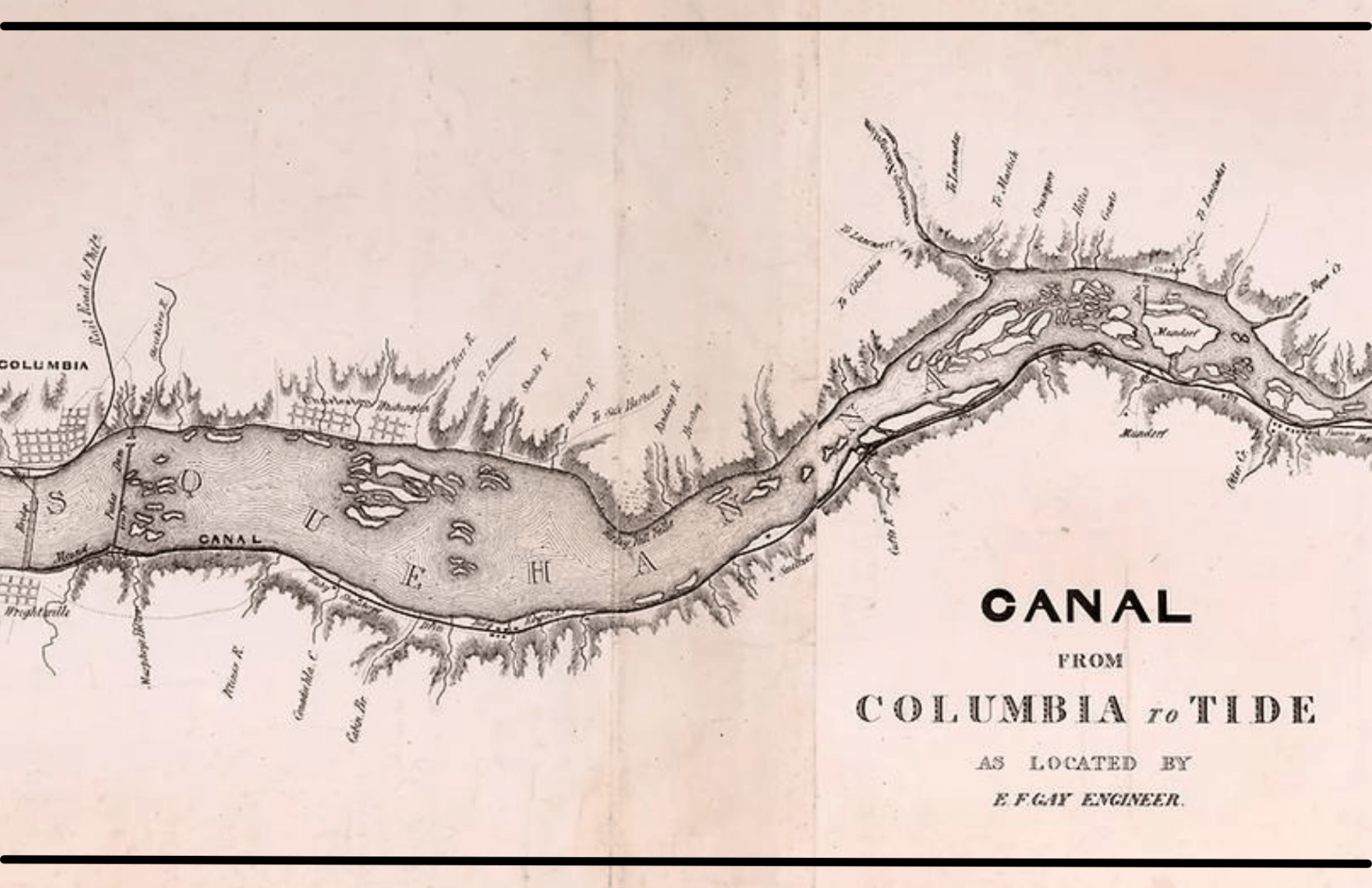Our History
The Susquehanna and Tidewater Canal
- a brief history
(Photo above is of the restoration in 1982)
Construction on the Susquehanna and Tidewater Canal was begun in 1836 and completed in 1840. The 45 miles of canal ran from Wrightsville, PA to the top of the Chesapeake Bay at Havre de Grace, MD. It interconnected with nearly 4,000 miles of other canals throughout the Midwest and Eastern United States and opened central Pennsylvania to convenient trade with Philadelphia and Baltimore. A total of 29 locks, 19 in Pennsylvania and 10 in Maryland, raised or lowered canal boats a total of 233 feet to compensate for the elevation difference.
The boats were pulled by mules. Lumber, farm products, and especially coal were the primary cargoes transported via the canal during its heyday in the 1860s and 1870s.
With the advent of the railroad, the role of canals began to decline. Railroads were faster, cheaper to maintain, and could operate year round. In fact, the Reading Railroad acquired the canal in the 1870s, eventually selling it to an agent of the Philadelphia Electric Company in 1902 for the future construction of the Conowingo Dam. Thus ended the active life of the S&T Canal and the canal era in Havre de Grace.
Finally, in 2020, the museum changed its mission to reflect what the museum was best known for - the history Susquehanna & Tidewater Canal. Since then, with a narrowed and focused mission, the museum has begun upgrading its exhibits and has re-branded itself as
the museum of the entire S&T Canal telling the stories of people, politics, and economics along its 45 mile stretch.

The Lock House
The Susquehanna & Tidewater Canal Dedication Ceremony 1840
Below are snippets about this grand event as reported in the Baltimore Pilot & Transcript May 28, 1840
"The invited guests and stockholders in Pennsylvania...left Columbia on the morning of the 26th, in canal packet-boats, and through the entire passage of the canal to Havre de Grace.
The guests and stockholders from Philadelphia left that city at 5 o'clock yesterday morning, in a special railroad train and reached Havre de Grace at 10 o'clock.
The guests and stockholders from Baltimore, left this city in a special train of cars, at half past seven yesterday,...where they were welcomed by cheers and bands of music.
The procession moved to the Canal basin, and embarked on board six boats in waiting for excursion on the canal. The moment was marked by a National Salute, from Artillery posted on the adjacent heights, and by bands of music."
______________________
"The Susquehanna & Tidewater Canal, now completed, is a continuation of the Pennsylvania State Canal, from Columbia to HDG...It is the last link in the great chain of improvements made by the States of Pennsylvania, Ohio, and New York, constructed at a cost of more than thirty millions of dollars...This being the nearest route to an Atlantic port that is now, or ever can be made, all the vast countries traversed by these canals, and the regions west of of them, will inevitable transmit their commodities through this avenue."
______________________
TOASTS
Pennsylvania and Maryland - United in interest by works of internal improvement-their social and political union will be more intimately cemented.
The Valley of the Susquehanna - Rich in minerals, in the products of the forest, and the agriculture-a highway to the seaboard, commensurate with its stores of wealth, is at length opened.
The Chesapeake Bay - The Mediterranean of the West, like that of the East-the sails of many nations will whiten its waters.
______________________
"...There was one striking fact. The day was fine, the sun had great power, and many persons were crowded on the decks of the boats, fatigued and thirsty. In the canal boats, and on the canal were spirits, and the choicest wines in profusion, and of the assembled hundreds we did not see a single drunken or disorderly person."



